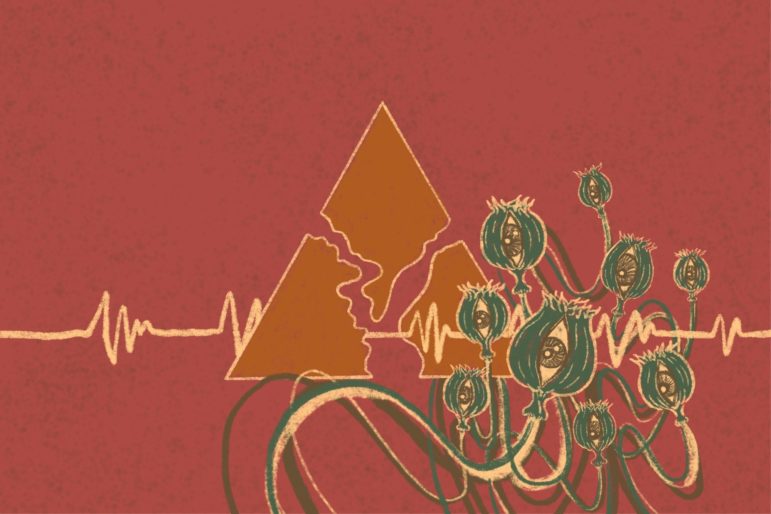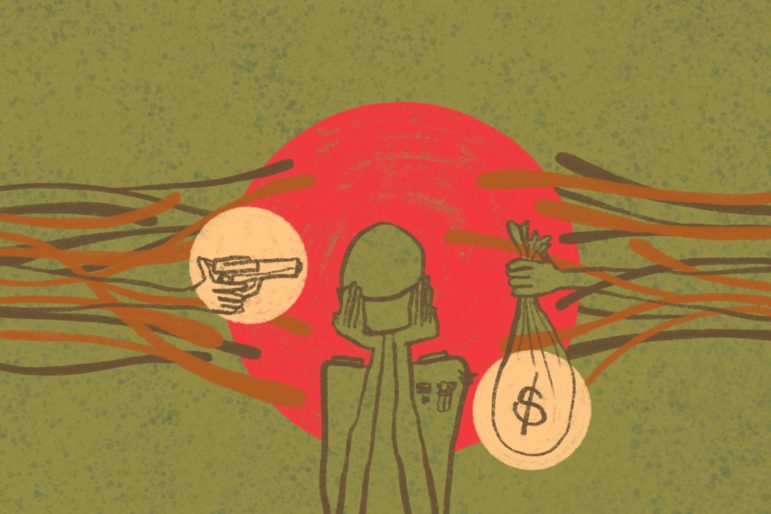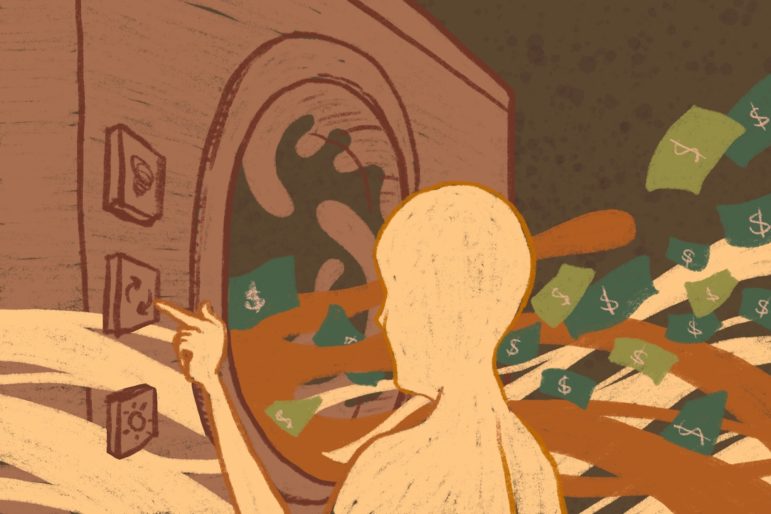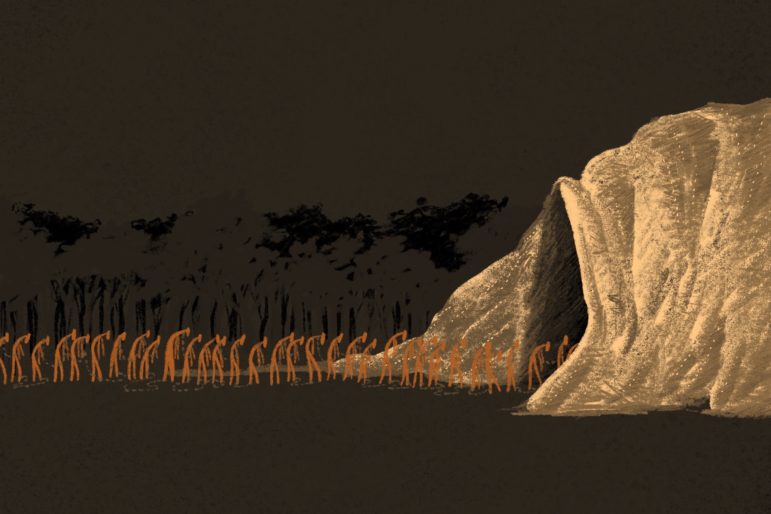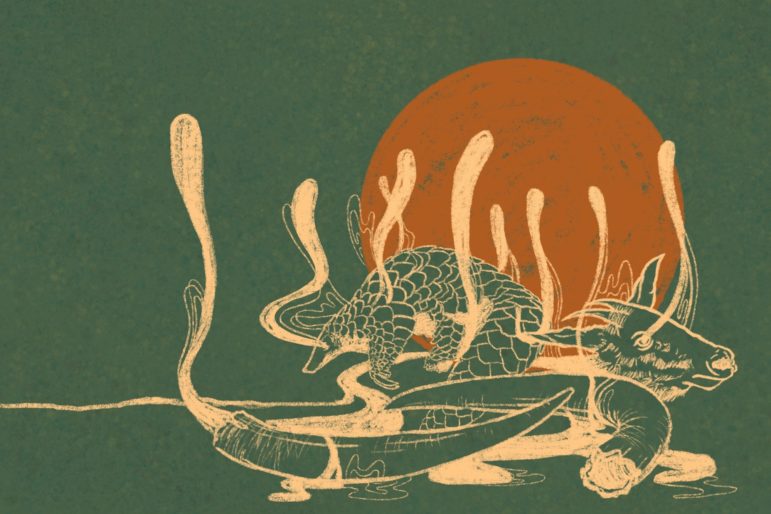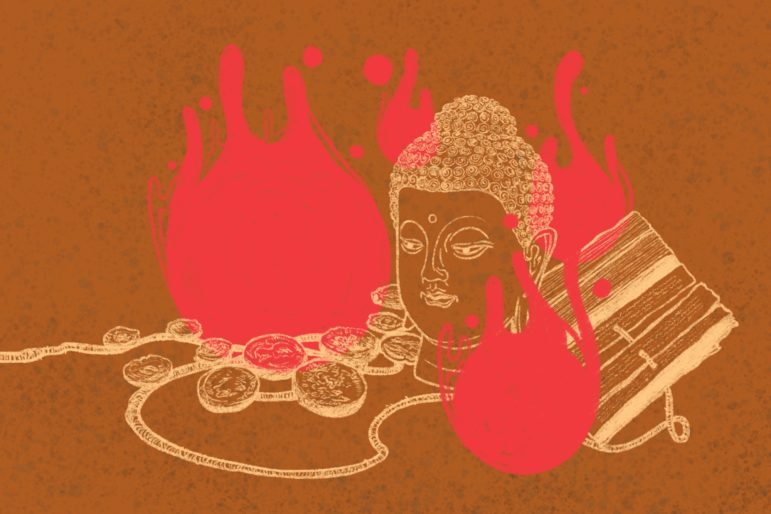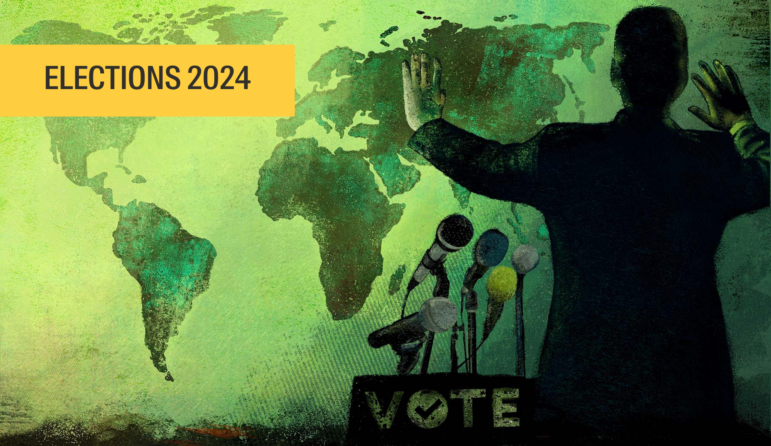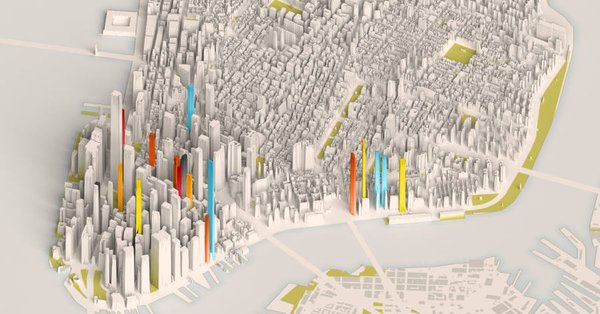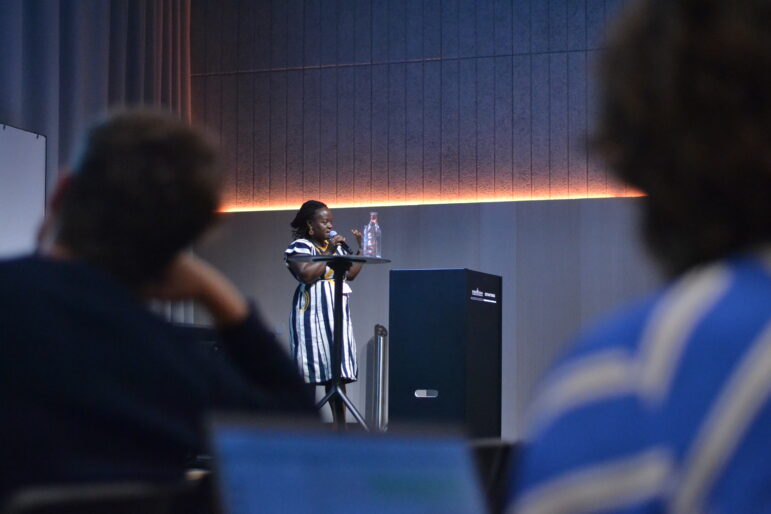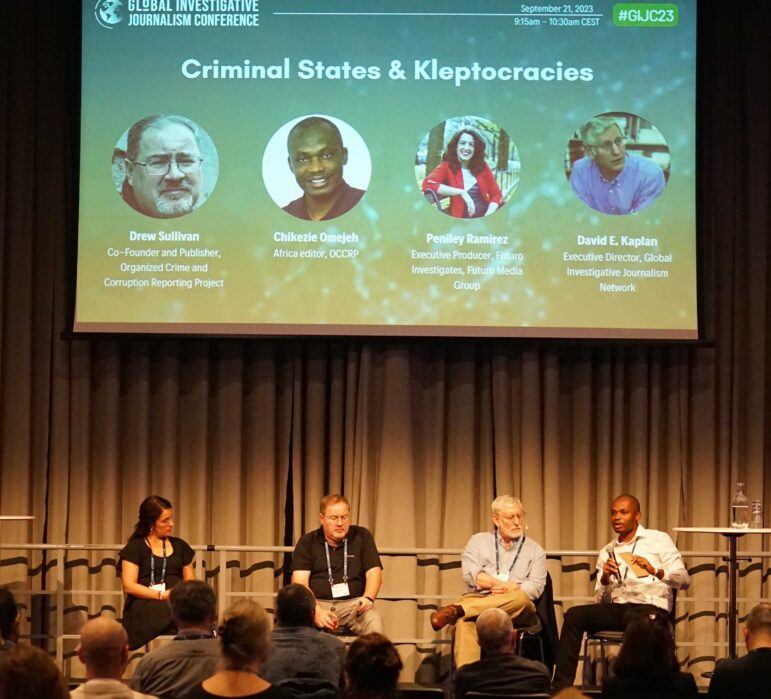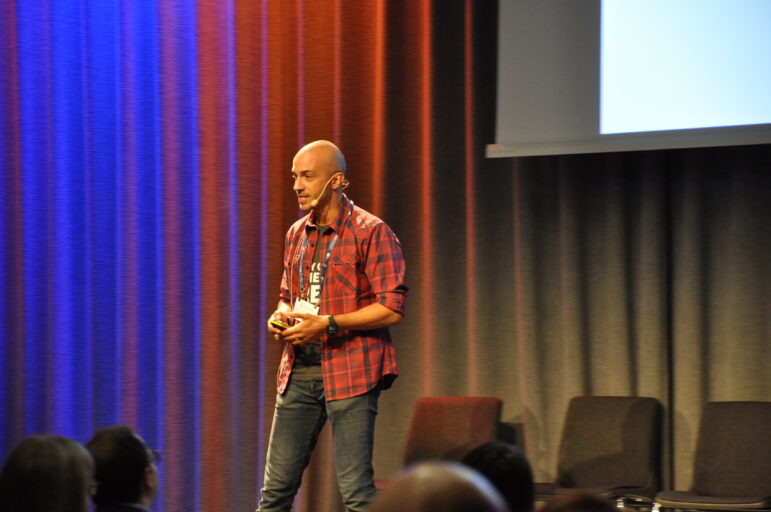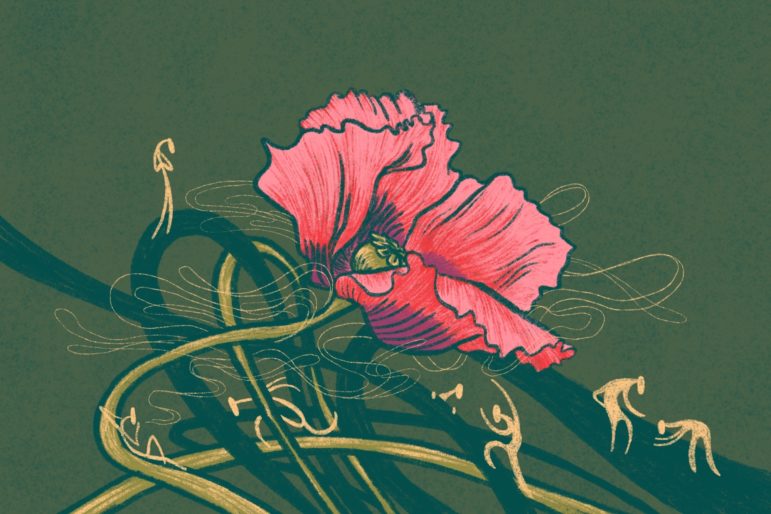

Guide to Investigating Organized Crime in the Golden Triangle: Chapter 1 — Drug Trafficking
Chapter Guide Resource
Guide to Investigating Organized Crime in the Golden Triangle — Introduction
Chapter Guide Resource
Guide to Investigating Organized Crime in the Golden Triangle: Chapter 1 — Drug Trafficking
Chapter Guide Resource
Guide to Investigating Organized Crime in the Golden Triangle: Chapter 3 — Money Laundering
Chapter Guide Resource
Guide to Investigating Organized Crime in the Golden Triangle: Chapter 4 — Human Trafficking
Chapter Guide Resource
Video: Investigating Organized Crime in the Golden Triangle
Table of Contents | Introduction | Chapter 2 | Chapter 3 | Chapter 4 | Chapter 5 | Chapter 6
The Myanmar sector of the Golden Triangle is where most drugs in the region are produced, sold locally, and smuggled out to international markets. Thailand has ceased to be an opium-growing country but still plays an important role as a market for drugs, a center for money laundering, and a conduit for narcotics destined for other parts of the world. Laos has also ceased to be a major opium-producing country, but there are methamphetamine laboratories in remote parts of the country. Drugs produced in Myanmar are often funneled through Laos to Thailand and Vietnam, and money derived from the drug trade is laundered in casinos in the northern part of Myanmar and Laos.
How it Works
The drug trade on the main, Myanmar sector of the Golden Triangle, as well as other unofficial commercial activities in the area, involves many different players, and the hierarchy of their roles can be described as follows:
- The farmers who grow the poppies earn a pittance for months of laborious work. They are mostly hill-tribe peoples, such as Kachin, Lahu, Wa, Lisu, Palaung, and Akha, but there are also poor, ethnic Chinese peasants from Kokang and other mountainous areas in Myanmar’s Shan State and, to a lesser extent, Kachin State. Despite living at subsistence level, they still have to pay “taxes” to various rebel groups and Myanmar Army-affiliated militias claiming their areas, as well as bribes to government officials who are supposed to enforce the laws against drug cultivation.
- The merchants who buy the opium from the farmers and pay tax to the rebels and the militias are respected local businessmen who live quite openly in government-controlled market towns. They send their agents to the hills to purchase harvested raw opium, and then use various armed bands to transport the drugs to the refineries along the Thai border. The front for a middleman operation like this could be a supermarket, a chain of petrol stations, or an ordinary trading house, doubling as a wholesaler of legitimate consumer goods. These merchants can be based in Myanmar, Thailand, Laos, or China. The methamphetamine trade has produced a different kind of investors, but they are also using perfectly legitimate businesses to conceal their involvement in the narcotics business.
- Myanmar’s ethnic rebels and militias, who control and operate in the poppy growing areas, collect so-called tax from the farmers and the merchants. They also provide protection, for a fee, for laboratories where raw opium is refined into heroin as well as, increasingly, production facilities for methamphetamine and other synthetic drugs. The actual owners of those laboratories are usually outside traffickers who also hire professional chemists to refine the drugs. Local ethnic rebels have political agendas and most of them are not involved in the drug trade or play only minor roles in it. Government-affiliated militias, however, are in it solely for the money. Like the old Ka Kwe Ye, or KKY (literally “defense”), government-recognized militias which were set up in the late 1960s to fight anti-government rebels and then disbanded in 1973, they are allowed to trade in narcotics in exchange for fighting the ethnic rebels.
- Intelligence agencies from various countries have a long history of using drug traffickers as assets, but that does not, as claimed by some writers, mean that those agencies are using drug money to finance the murkier side of their activities. During the Indochina War in the 1960s and 1970s, the Americans used the Chinese Kuomintang (Nationalist Chinese forces that had retreated into northeastern Myanmar after their defeat in the Chinese civil war in 1949) to collect intelligence in northern Myanmar, northern Laos, and across the border in southern China. That relationship no longer exists, but Thai intelligence agencies do maintain links to various actors inside the Myanmar sector of the Golden Triangle. Increasingly, China’s security services are also involved, using armed groups in Myanmar for intelligence gathering and as leverage to get influence in internal Myanmar affairs.
- Drug syndicates based in Thailand, China, and elsewhere provide financial support and also supply chemists to the heroin refineries and methamphetamine laboratories along Myanmar’s borders with Thailand and China. These syndicates also manage the regional and international distribution of the drugs. They are not, as some writers believe, offshoots of or the same as Hong Kong- and Macau-based Triads. The “kingpin” theory, or the belief that there are a small number of drug dealers who control most of the trade, which has been promoted among others by the US Drug Enforcement Administration (DEA) in Southeast Asia and elsewhere, is more Hollywood than reality. As Ko-lin Chin, a leading authority on the Golden Triangle drug trade has pointed out, the drug networks “are horizontally structured, fluid, and opportunistic.” The Triads may sell drugs in their respective territories, but they don’t run the trade as such.
- The couriers are perhaps the most visible links in the narcotics chain, since they are the ones most frequently caught and exposed by the media. A courier, or a “mule,” could be anyone who was hired by the syndicates to carry drugs from one place to another. These couriers are often labeled by the media as well as law enforcement agencies as “drug traffickers,” but the use of this term for low-level actors often deflects attention away from the much more powerful syndicates, which effectively operate above the law.
- The addicts, the consumers of the drugs, and their families are among the most impacted victims of the drug business along with the impoverished farmers who grow the poppies. Although most of the narcotics produced in the Golden Triangle are destined for foreign markets, it is often forgotten that drug abuse still is widespread in tribal villages in the Golden Triangle, causing enormous social problems locally.
The military takeover in Myanmar in February 2021 has not changed the way in which the drug trade works or the way in which it is done. The basic hierarchy remains the same.
Tips and Tools
It is of utmost importance to build up a network of trusted, on-the-ground sources such as local journalists, foreign and indigenous NGO workers, teachers, and other community-based workers, and even local businessmen who may be willing to share information. But remember that they live and work in the region, so if they ask for anonymity, it must be respected. Information provided by official sources can also be used, but should be treated with utmost care because what they tell journalists seldom reflects the actual situation inside the Golden Triangle criminal netherworld. But these officials are among the best options for on-the-record quotes, because few of the other sources would be willing to talk publicly using their own names.
There are a few online tools and resources about the Golden Triangle drug trade, but not all of them are reliable and should be cross-checked with knowledgeable local sources.
- Reports of the United Nations Office on Drugs and Crime (UNODC) are available online.
- So are the US Drug Enforcement Administration’s reports. The US State Department has a specific page for Myanmar (Burma). The US Embassy in Burma also has information on drug enforcement efforts in that country.
- More reliable information is available on the website of the Shan Herald Agency for News (SHAN), an independent NGO based in Chiang Mai, northern Thailand. SHAN follows events inside the Golden Triangle and has produced a number of reports on the drug trade.
- The Transnational Institute (TNI) in the Netherlands is also an excellent source of independent reporting and alternative views on the Golden Triangle drug trade.
- Chao Tzang Yawnghwe was an ethnic Shan (he died in 2004) — his father, Sao Shwe Thaike, served as Myanmar’s first president (1948-1952) — who wrote extensively about his homeland, Myanmar’s ethnic minorities, and related issues such as the politics of drugs.
Other Useful Literature
Although it was written half-a-century ago, Alfred McCoy’s groundbreaking “The Politics of Heroin in Southeast Asia” is still a must-read for anyone who wants to cover the Golden Triangle. McCoy was the first to put the drug trade in a political context and not treat it as primarily a law-and-order problem. The original 1972 edition was updated in 1991 and 2003.
“The Secret Army: Chiang Kai-shek and the Drug Warlords of the Golden Triangle” by Richard Gibson and Wenhua Chen (2011) also gives a comprehensive background to the growth of the Golden Triangle drug trade.
Other literature includes Bertil Lintner’s “Burma in Revolt: Opium and Insurgency Since 1948” (1994, 1999, 2003, and 2011), “Blood Brothers: Crime, Business and Politics in Asia” (2002, US edition 2003), “Merchants of Madness: The Methamphetamine Explosion in the Golden Triangle” (2009), “The Wa of Myanmar and China’s Quest for Global Dominance” (2021), and “Cross-Border Drug Trade in the Golden Triangle” (1991).
Ko-lin Chin’s “The Golden Triangle: Inside Southeast Asia’s Drug Trade” (2009) and (with Sheldon X. Zhang) “The Chinese Heroin Trade: Cross-Border Drug Trafficking in Southeast Asia and Beyond” (2015) are excellent, scholarly studies of the drug trade and how it works.
Pierre-Arnaud Chouvy and Joel Meissonnier’s “Yaba: Production, Traffic and Consumption of Methamphetamines” (2002) and Pierre-Arnaud Chouvy’s “Opium: Uncovering the Politics of the Poppy” (2009) are also worth reading as is Pierre-Arnaud Chouvy (ed.) “An Atlas of Trafficking in Southeast Asia: The Illegal Trade in Arms, Drugs, People, Counterfeit Goods and Natural Resources in Mainland Southeast Asia” (2013).
Official reports from the UN are often unreliable because they are based on data collected by host governments, and in Myanmar especially, that is a major problem. In 2019, the UNODC released a report claiming that “the highest density of poppy cultivation took place [the year before] in areas under the control of…the Kachin Independence Army (KIA)”, referring to a politically motivated, anti-government rebel group active in Myanmar’s Kachin State. In fact, as shown on the UNODC’s own maps accompanying the report, poppy cultivation in Kachin State was confined to areas controlled by a local militia under the command of the Myanmar Army. The report prompted the Transnational Institute (TNI), an independent Netherlands-based NGO, to issue a statement criticizing the UNODC and calling its report a “distortion of reality.”
The US DEA is somewhat more reliable than the UNODC, but its reports are also often misleading. A typical example: in early 2022, the DEA claimed that one of its undercover agents had secured evidence leading to the arrest of a “leader of a Yakuza organized crime gang,” as well as three Thais who claimed to have military backgrounds, as part of an alleged plot to sell US-made man-portable air-defense systems (MANPADS) to three ethnic rebel groups in Myanmar. Part of the payment was to be in drugs. But investigations by journalists showed that none of the three groups had ever heard of the deal and that the purported “Yakuza boss” was actually a low-level swindler living in a modest apartment in a Tokyo suburb. In the end, all that the DEA appears to have ended up with is the arrest of a talkative Japanese fraudster — and three Thai conmen no one inside Myanmar seems to have heard of. Nevertheless, the DEA touted it as a major victory in the “war on drugs.”
Case Studies
Drugs, Guns And Four Stories From The Northeast, Outlook India (2020)
Drugs from the Golden Triangle are being smuggled not only to Southeast Asia and beyond but also to nearby India. The northeastern Indian states of Arunachal Pradesh, Nagaland, Manipur, and Mizoram share their borders with Myanmar, and drug addiction is a major problem in all those states. First, it was opium and heroin, and now different types of methamphetamines and other synthetic drugs. On September 25, 2020, the Indian weekly Outlook published an investigative piece on the drug problem in the northeast. The report is based on interviews with drug addicts, activists, and local law enforcement officials (most of them anonymous, but the article is well-documented and credible). The author of the article traces the history of the drug trade and drug addiction in India’s northeast and outlines the involvement of local rebel groups as well as corrupt military officers and government officials in the region. It also lists major trafficking routes into India. The strength of the investigation is that it was written by a local (Manipur) peace activist and, therefore, also addresses stereotypes when it comes to perceptions of the tribal areas of the northeastern states in the rest of India. If you wish to cover the issue, don’t forget to cover illicit opium production in remote areas of Arunachal Pradesh, which, several sources claim, is increasing (although the exact volume of opium being produced illegally is not known). Most of it appears to be consumed locally, while some is transported to other parts of India.
The Real Driving Forces Behind Myanmar’s Opium Trade, Asia Times (2019)
There is no doubt that Myanmar remains the largest producer of opium, its derivative heroin, and various other synthetic drugs in the Golden Triangle. But changes are occurring and recent developments in Myanmar’s drug business were investigated in an article published by Asia Times on April 2, 2019. The investigative report pointed out that for the past few decades, China has been the main market for drugs from Myanmar. The author of the article managed to detect changing consumption patterns in China by looking at price structures. As the Chinese middle class is growing and becoming more “modern,” heroin is no longer the drug of choice. Chinese drug users are turning to party drugs, locally produced “ice” (methamphetamine) and fentanyl, and even cocaine imported from South America. Consequently, Myanmar’s opium farmers are suffering and no viable alternative has been offered to them (they live in war zones where development projects are few and far between). The only exception to this downward trend is in Kachin State, where militias allied with the Myanmar Army are propping up the cultivation of opium as well as the production of heroin. Relatedly, heroin addiction is widespread in Kachin State, especially among young people, and the rising number of addicts there shows that drug addiction has become a major local social problem, especially in the war-torn areas where Myanmar’s ethnic minorities live.
Merchants of Madness: The Methamphetamine Explosion in the Golden Triangle by Bertil Lintner and Michael Black (2009)
Laos is another underreported link in the Golden Triangle drug trade and, since the end of the Indochina War in 1975, it has seldom appeared in stories about the regional narcotics business. One reason is that significant quantities of opium are no longer grown there and little is known about the local production of methamphetamine. But, in October 2021, Lao law enforcement officials seized a truck carrying 55 million methamphetamine tablets and 1.5 tons of crystal methamphetamine — a distilled, more potent form of the drug. The bust came shortly after Lao police had seized 16 million amphetamine tablets in two separate operations in the same area — Bokeo in the Lao sector of the Golden Triangle — over a one-week period. The seizure was widely reported in the media in Southeast Asia, but few actually looked into the origin of the drugs. An investigative journalist would have done precisely that and found out that the drugs were produced in Myanmar and the route through Laos and on to markets in Thailand and Vietnam was chosen because it was assumed that Lao law enforcement agencies would be less competent and vigilant than their counterparts in neighboring countries. In September 2022, Laos made another huge drug haul: 33 million methamphetamine tablets were seized near Kings Roman, a casino complex in the Lao sector of the Golden Triangle.
Table of Contents | Introduction | Chapter 2 | Chapter 3 | Chapter 4 | Chapter 5 | Chapter 6
Additional Resources
Reporter’s Guide to Investigating Organized Crime
Journalist’s Guide to Investigating Drug Trafficking
Tips for Reporting on Human Trafficking and Forced Labor
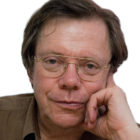 Bertil Lintner is the author of 22 books on Asian history, politics and crime. He is currently with Asia Times and is a former correspondent with the Far Eastern Economic Review, Hong Kong, the Swedish daily Svenska Dagbladet, and Jane’s Information Group in the UK. Lintner lives with his family in Chiang Mai, northern Thailand.
Bertil Lintner is the author of 22 books on Asian history, politics and crime. He is currently with Asia Times and is a former correspondent with the Far Eastern Economic Review, Hong Kong, the Swedish daily Svenska Dagbladet, and Jane’s Information Group in the UK. Lintner lives with his family in Chiang Mai, northern Thailand.

